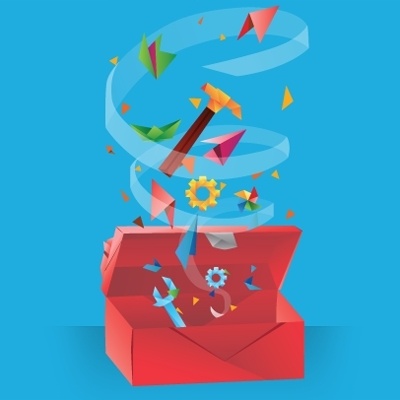How To Craft Your Change Journey When Designing More Effective Learning Solutions
In Part 1 of this article we explored the 6-step process for a change journey: Engage, diagnose, learn, apply, assess, reinforce. In other contexts—say, learning how to give better feedback to an employee or learning how to complete the correct process in order to execute a customer’s transaction—the mix or blend of the 6 steps in the journey may differ in emphasis and execution from learning how to drive a car. But the essential structure generally remains the same.
So as you think about how to architect an overall learning solution that will really improve performance and be applied back on the job, it’s helpful to use these 6 steps as a guide. Bersin describes this approach as “continuous learning”.
As you begin to architect and design a new learning solution, consider applying this 6-step process. You’ll want to consider some key questions about each step that will help you determine how much emphasis to place on that step and what types of experiences will work best to support that step in the journey. You may even find that some steps may not be needed.
“Continuous Learning” refers to the ongoing development of skills, abilities, and knowledge through different means (including work on the job, training, experiences, communications, etc.), and is part of an individual’s ongoing professional life at work and outside of work. It is an approach to learning in which corporate resources, expectations, and culture encourage employees to learn continuously throughout their tenure with the organization. Continuous learning requires L&D organizations to rethink the types of learning they deliver, how they deliver them, and how resources are allocated.
| Step | What To Consider |
| 1. Engage | How ready is your audience to move toward a change? Do they need to be convinced? Do you need to capture their attention? Or do they already have the intrinsic motivation to go on this journey? |
| 2. Diagnose | How aware is your audience of their current performance and abilities? Do they have a solid understanding of their strengths, weaknesses and gaps? |
| 3. Learn | What sort of learning solution is most appropriate? Is it a knowledge or skills gap, or does a behavior need to change? |
| 4. Apply | How difficult will it be to apply the knowledge or skill back on the job? How much practice, help, and support is appropriate? |
| 5. Assess | How will you determine if the desired outcome was achieved? |
| 6. Reinforce | How will what you be taught change over time? How important is it to keep the content top-of-mind? |
All Journeys Aren’t The Same: 2 Examples
The example of learning to drive is one context, one set of learning needs, and one audience. Of course, as these inputs change, so will the make-up of a solution. As you work through a specific performance challenge for which you’re trying to move the needle, you may find that you don’t have to go through all 6 of the steps or that certain steps require more emphasis or focus than the others. Let’s look at a handful of other examples to understand how the shape of a solution might change.
For each of the examples that follow, we lay out the overall business need and then provide a short description of the steps that we would focus on the most in our overall plan.
Example 1: Developing Front-Line Managers
Business Need: The transition from individual performer to front-line manager is one of the most difficult transitions people have to make. As a new manager, your first priority shifts from getting the work done yourself to building a team and enabling them to succeed. It’s a set of skills that may be completely new to you. And even if they aren’t completely new, you probably have limited experience putting them to use.
Key Solution Components:
- Diagnose.
While new managers will often feel overwhelmed, they typically don’t have the experience to understand their specific skills gaps and challenges. An upfront diagnostic made up of self-assessment and team feedback is used to define needs and set priorities. - Apply.
Most of the skills need by front-line managers, e.g. coaching, feedback, delegating, etc. can be introduced with simple models, but putting them into practice is much more difficult. Structured practice with feedback from a manager turns out to be the most critical part of the program. So in this example, we would make sure to build in a lot of real-word practice activities into our overall solution design.

Example 2: Information Security Training
Business Need: In the shadow of a major information security breach in the industry, this entertainment company had a strong need to introduce information security best practices and keep them top-of-mind as people went about their day-to-day work.
Key Solution Components:
- Engage.
Let’s face it: Most information security training gets a cursory look at best, but in this case, due to potentially significant consequences of a violation, getting all employees engaged was critical. To meet the need, the company implemented a broad campaign infused with a bit of humor. The goal was to really help people understand why this mattered. They needed to get them engaged and truly understand the consequences of not complying with their policies. To do this, they created a highly visible, viral campaign that included short videos (two bumbling characters out to create the greatest movie ever made on information security), posters from well-known movies with our bumbling characters superimposed along with clever taglines, messaging and theming of cafeteria menus on Info Sec awareness days, and more. - Reinforce.
Of course cyber security threats aren’t a one-time event—they are constant—so after the “learning” phase (achieved through a series of short eLearning modules), key messages and best practices were reinforced with ongoing emails to keep content top of mind. Individuals were also given a desktop best “decoder” or practice wheel to help them quickly determine the right response to different situations.

With these 2 examples, we’ve illustrated how each change journey you design may be a little different based on the answers to the questions you asked upfront about each of those six steps.
This approach drives a better, more holistic approach to design that considers the gap from where the individual starts to where they want to go. Through architecting effective change journeys, we can provide more effective knowledge transfer back to the job, ultimately impacting your businesses bottom line. And that sounds like the kinds of results we’re really likely to drive in our organizations, right?
Hope Isn't A Method
Today, too many of us develop training that begins and ends with the delivery of content. We then hope it will have the desired result. We hope learners are engaged and motivated to take the course. We cross our fingers and hope they apply what they learned back on the job. We hope we achieve the desired outcome we set out to target.
Given this approach, it’s no surprise that only 25% of CEOs think that their training programs are effective at measurably improving performance. For L&D to take a step forward, we need to work with our business partners to own the change journey from beginning to end. We need to think beyond the event itself and architect solutions that will drive the types of tangible results your business needs.
Related Articles:
- Free eBook: Designing For Results – A Framework For Designing More Effective Learning Solutions
- Designing More Effective Learning Solutions (Part 1): A 6-Step Process For A Change Journey








